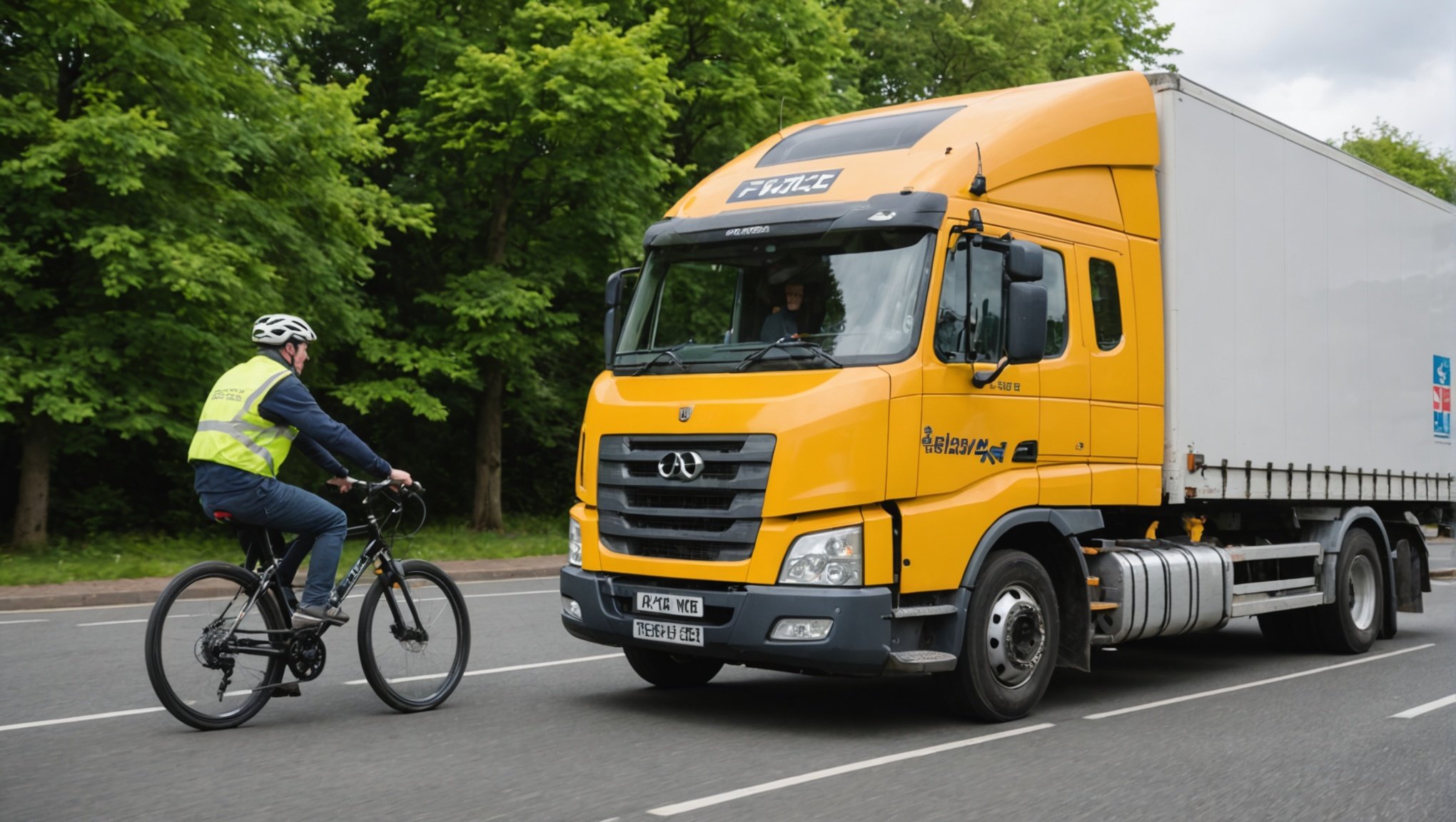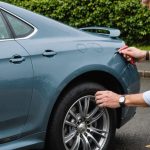In the bustling streets of the UK, cyclists and heavy vehicles constantly share the road. As this interaction happens, the safety of cyclists often rests on a thin line. More often than not, cyclists find themselves on the receiving end of the risk involved. From the blind spots in the mirrors of large vehicles to the unexpected turns, and the unawareness of some drivers, the danger is real. Navigating through this complex and sometimes hazardous roadscape requires knowledge, skills, and the right practices.
This article takes you through effective strategies that can help cyclists ensure their safety when sharing the road with heavy vehicles. We will explore visibility, positioning, communication, anticipation, and the significance of wearing the right gear.
In parallel : Essential Guide to Adjusting Torque Specifications for Tire Changes on Your Lightweight Compact Car
The Importance of Visibility
Visibility is the first step towards cyclist safety on roads shared with heavy vehicles.
In traffic, especially that involving heavy vehicles like lorries and buses, the paramount rule for cyclists is to ensure they are noticeable. The fact is, no motorist deliberately sets out to cause harm to cyclists. Most of the accidents involving cyclists and heavy vehicles occur mainly because the driver didn’t see the cyclist.
In parallel : Essential Tips for Detecting Air Suspension Leaks in Luxury Cars
Being visible, therefore, reduces the chances of being involved in accidents. Cyclists can achieve this by: wearing bright coloured clothing during the day, using reflective materials on their bodies and bikes, and utilizing front and rear lights when conditions demand, especially during nighttime or when the weather is poor. Applying these practices will make cyclists more visible to drivers of heavy vehicles, hence improving their safety.
Positioning on the Road
Positioning on the road is a critical aspect of cyclist safety when sharing roads with heavy vehicles.
As a cyclist, understanding where to position yourself on the road when cycling alongside heavy vehicles is a significant safety measure. It is important to ride well clear of the kerb. This gives you room to maneuver in case a vehicle comes too close or something on the road forces you to swerve.
When approaching a junction or roundabout, take a more central position on your lane. This prevents drivers from squeezing past you in dangerous situations. Avoid undertaking, especially heavy vehicles, as they might not see you due to their blind spots.
Effective Communication with Other Road Users
Effective communication with other road users is vital for cyclist safety in heavy traffic.
As a cyclist, you should always make your intentions clear to the other road users. Use hand signals to indicate when you are about to make a turn or change lanes. Make eye contact with drivers at junctions and roundabouts to ensure they have seen you. This helps to create a mutual understanding between you and the drivers, thus reducing the chances of collisions.
Anticipating Other Road User’s Actions
Anticipating other road users’ actions is fundamental for cyclist safety.
Predicting the actions of other road users enables you to make proactive moves that ensure your safety. Always look ahead and observe the actions of drivers. Their actions may indicate their intentions. For example, if a vehicle ahead of you is slowing down, it may be preparing to turn. Observing and interpreting these signals accurately allows you to take appropriate action.
Wearing the Right Gear
Wearing the right gear is crucial for cyclist safety when sharing roads with heavy vehicles.
Protective gear such as helmets, gloves, and knee and elbow pads can save you from severe injuries in case of an accident. The right shoes give you a firm grip on the pedals, hence better control of your bike. Always ensure your gear is in good condition before hitting the road.
In a nutshell, sharing the road with heavy vehicles in the UK as a cyclist calls for visibility, proper positioning, effective communication, anticipation of other road users’ actions, and wearing the right gear. By paying attention to these aspects, you increase your safety and contribute to a safer road environment for everyone.
Adopting Safe Cycling Habits
Cycling safely in heavy traffic demands the adoption of specific habits that reduce the likelihood of accidents.
One of the most vital habits is always to follow traffic rules and regulations. Stop at red lights, follow directional signs, and respect pedestrian crossings. This habit not only keeps you safe but also enhances your predictability in the eyes of other road users.
Another key habit is regular bicycle maintenance. Ensure that your brakes, gears, and tyres are in good working condition. This goes a long way in giving you control over your bike and preventing accidents due to mechanical failures.
Additionally, you should consider taking a cycling training course. Such courses equip you with advanced cycling skills and knowledge that enhance your safety on the road. The course can equip you with skills such as emergency stop, manoeuvring around obstacles, and using rear-view mirrors effectively.
Finally, always stay alert and focused on the road. Avoid distractions such as using your phone while cycling. Being alert allows you to notice changes in traffic and react appropriately.
Conclusion: Ensuring Cyclist Safety in the UK
In conclusion, ensuring cyclist safety when sharing the road with heavy vehicles in the UK is a collective responsibility. Cyclists have to adopt safety measures such as improving their visibility, positioning themselves correctly on the road, communicating effectively with other road users, anticipating other road users’ actions, wearing the right gear, and adopting safe cycling habits.
On the other hand, drivers of heavy vehicles need to be conscious of cyclists on the road. They should regularly check their mirrors, give cyclists enough space, and avoid making sudden manoeuvres that can endanger cyclists.
Lastly, the government and relevant authorities should implement cyclist-friendly policies. These could include the creation of dedicated cycling lanes, strict enforcement of traffic regulations, and public awareness campaigns about cyclist safety.
By working together, we can create a safer road environment for everyone. Remember, safety comes first, whether you’re behind the wheel of a heavy vehicle or pedalling on two wheels.
















